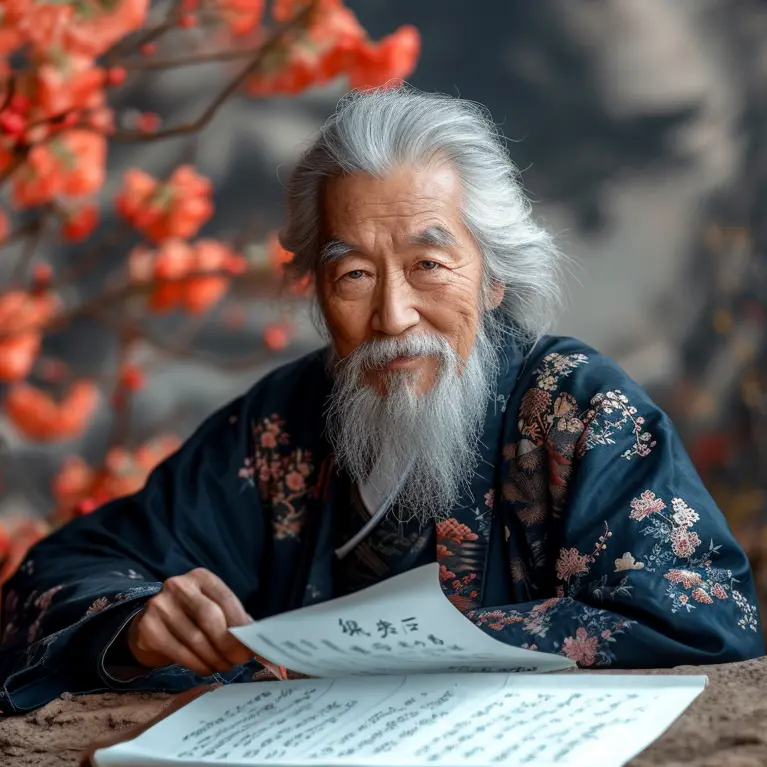When You’ve Asked Everyone and Still Don’t Know… Try Asking the Question Differently
You’ve asked your best friend. Your therapist. Your cat. Even your ex (why?!).
You’ve made pros-and-cons lists. Tarot cards. Watched YouTube videos about “gut instinct vs. fear.”
And you still don’t know what to do.
We all get there.
Some decisions come dressed like hurricanes — loud, dramatic, in your face. Others are more like fog: quiet, disorienting, and impossible to move through with confidence.
And in those moments — when logic loops back on itself, when astrology memes contradict each other, when no one seems to understand the weight of your “should I stay or should I go?” — that’s when you need to ask the question differently.
Not louder. Not to more people.
But deeper.
There’s an ancient way of doing that.
It doesn’t give you a Yes or No.
It gives you a landscape. A mirror. A pattern from the rhythm beneath your thoughts.
It’s been used in the East for thousands of years — not by mystics, but by emperors, military strategists, tech CEOs, and your uncle in Seoul who checks it every time he renovates the kitchen.
Lao Tzu once said, “Knowing others is intelligence; knowing yourself is true wisdom.”
This system, quiet and old and alive, doesn’t tell you what to do — it helps you see what you already knew but couldn’t name.
You don’t have to believe in magic.
Just in the possibility that the question itself is the compass.
And if that resonates, well…
I know a page you should visit.
🧭 The Answer Isn’t Out There. It’s in the Way You Look at the Question.
Some cultures would call it praying.
Some call it meditating.
Others just say, “I need a walk.”
But in East Asia — especially China, South Korea, Taiwan, Japan, Malaysia, Singapore — there’s something else. Something older.
A way to listen to the patterns of change itself.
It doesn’t promise you a happy ending.
It won’t predict lottery numbers or your next crush’s favorite pizza topping.
But it does offer something we rarely get in a world of instant gratification and endless noise:
🌀 Clarity born from stillness. Direction from within uncertainty.
This tool has been used for:
- Choosing the right moment to act (or not).
- Understanding the deeper tone of a conflict or decision.
- Exploring the evolution of an idea, relationship, or challenge.
- Realigning with your values when everything outside says "hurry."
It’s called Yi Jing — or I Ching, if you met it through Western books.
In Chinese, it translates to “The Book of Changes.”
And no, it’s not just another “spiritual tool.” It’s a framework for reflection — wrapped in the most poetic logic you’ll ever encounter.
Confucius carried a copy with him everywhere.
Lao Tzu wrote like he was a living hexagram.
And in case you think it’s all incense and dragons, many modern East Asian professionals — yes, even engineers and corporate leaders — consult it regularly before major decisions.
Not because it tells them what to do.
But because it changes how they see what they were already living.
🔍 Where To Start? With a Click. (And a Breath.)
You don’t need a thick dusty book or a three-hour ritual.
We’ve made it simple. Interactive. Friendly.
You can even cast a hexagram with a few clicks — and yes, if you want, we explain everything behind the lines.
So if you’re curious — or stuck — or just tired of asking people who give you answers that aren’t really you...
👉 Step into the hexagram here:
Discover Yi Jing on BaZi Advisor
We’ve also written a few articles if you want to dive in gently:
And if you want to really understand how this fits in with Ba Zi, Feng Shui, and your personal energy map… we’ve got a free course waiting for you here:
🎓 Ba Zi & Feng Shui Online Course
🏁 Final Thought
You don’t need all the answers today.
Just the right lens to look through.
Sometimes, asking the question differently changes the path entirely.
“To see things in the seed, that is genius.” — Lao Tzu
🌱 Go plant a question. Yi Jing will show you how it grows.
📘 Appendix: What’s a Hexagram, Anyway?
If you’re wondering, “Wait, what’s a hexagram and why am I clicking on one?” — here’s the quick version:
In Yi Jing, a hexagram is a stack of six lines — some solid (Yang), some broken (Yin).
Each line reflects a stage of change or a layer of energy in a situation.

There are 64 possible hexagrams, each with its own poetic name, symbolic meaning, and deeper interpretation. Think of them like energetic snapshots — they show where you are, what forces are in motion, and where things are heading.
You don’t need to memorize them.
You just need to be open to reading between the lines.
And that’s what our interactive Yi Jing tool does:
👉 It helps you cast a hexagram (traditionally done with coins or yarrow sticks),
👉 And it shows you the ancient meaning… in clear, modern language.
Curious?
Try it here → BaZi Advisor | Yi Jing Page

Master Wey
Teacher of Classical Chinese Metaphysics
